Blackberry or Mulberry: Which Berry Reigns Supreme?
Blackberry vs. Mulberry comparisons reveal fascinating differences between these similar-looking berries.
Tasty fruits share a spot in the same botanical family yet maintain distinct characteristics all their own.
Most people can easily recognize the blackberry with its glossy dark appearance and slightly tart flavor profile.
In contrast, mulberries tend to grow longer, appearing in various colors from white to deep purple depending on their variety.
The juice from both berries stains fingers and clothing, making them somewhat messy treats during summer harvests.
Many home gardeners appreciate these nutritious fruits for their versatility in jams, pies, and fresh eating.
With so many subtle differences between these berry cousins, you might wonder which one deserves a place in your garden or on your plate.
Let's examine these delicious fruits more closely to help with your berry-related decisions.
Blackberries Overviwe That Every Berry Lover Should Know
Blackberries belong to the Rubus genus within the Rosaceae family and contrary to their name, these aggregate fruits form from merged carpels of a single flower rather than being true berries.
Their exact origins remain mysterious due to numerous varieties existing today, though many can be found throughout Europe and North America.
Unlike typical fruits, blackberries don't grow on trees but instead flourish on thorny brambles or bushes, which requires caution when harvesting to avoid painful pricks.
Garden enthusiasts should consider installing a trellis system for their blackberry plants to prevent them from sprawling uncontrollably and overtaking garden spaces or nearby trees.
Sweet Mulberry Facts to Know
Mulberries, members of the Mora family, aren't actually berries but rather collective fruits formed from multiple flower carpels. These tasty treats originally come from Asia and Africa, though many regions around the world now grow them.
Unlike their lookalike cousins blackberries, mulberries grow on deciduous trees instead of bushes. The trees themselves vary significantly in size across different species - red mulberry trees typically reach about 40 feet in height, while white mulberry varieties can soar up to 60 feet tall.
Most mulberry trees develop rapidly, often producing fruit after just a few years of growth. Several US states have actually banned male mulberry trees because they release large amounts of mildly toxic pollen that can cause health problems for people nearby.
Blackberries & Mulberries: Similarities
Blackberries and mulberries have enough in common to sometimes cause confusion for people trying to distinguish between them. Neither one technically qualifies as a berry - both are actually aggregate or collective fruits packed with antioxidants that help lower chronic disease risks.
These small, edible fruits work interchangeably in many recipes from cereals and fruit salads to baked goods and jams. Due to their perishable nature, both only last about two to three days when refrigerated, though freezing can extend their usefulness for several months.
Both fruits undergo color changes as they ripen, and their intense pigments make excellent natural food colorings. The juice from these non-berry fruits creates vivid stains that add beautiful hues to various dishes.
How Blackberries and Mulberries Stand Apart
Telling these two species apart is actually quite easy once you know what to look for. This table will show you some key points to compare them.
| Feature | Blackberries | Mulberries |
| Appearance | Clusters of small black balls, 1 inch long, turn from green to dark purple/black. | Longer, similar width, come in white, purple, black, and red; stain skin easily. |
| Taste | Tangy, sweet with earthy notes; core can be bitter if unripe. | Sweeter and juicier with mild tartness; best when fully ripe. |
| Leaves | Compound leaves with 3–5 oval leaflets; support oral health and immunity. | Oblong, serrated leaves; used for silkworms; aid blood pressure and sugar control. |
| Nutrition | High fiber, vitamins (esp. C), low fat; good for digestion and weight control. | Similar nutrients; rich in vitamin C; boosts immunity and circulation. |
| Season | Harvest July–August, sometimes late June for early types. | Two seasons: March–May and October–November; harvest when ripe. |
Appearance
Mulberries and blackberries have similar shapes and colors but can be distinguished by certain traits. Blackberries look like clusters of small black spheres arranged around a center, about 1 inch long and 0.8 inches wide. They change color from green to red, then dark purple-black when ripe.
Mulberries, on the other hand, are about twice as long as blackberries but share the same width. They appear elongated and can be white, purple, black, or red.
Mulberries also tend to stain your hands more easily when handled.
Taste
Blackberries offer a sweet yet tangy flavor with earthy undertones and a woody core, which some find slightly bitter if unripe. Removing the seeds and core can reduce bitterness.
Mulberries are generally sweeter and juicier with a milder tartness. They are smoother due to pectin content and sometimes described as tasting like a blend of grapefruit and blueberries.
The best flavor comes from fully ripe mulberries; unripe ones tend to be sour and harsh.
Leaves
Blackberries grow on bushes with compound leaves that have three to five oval leaflets. These leaves have health benefits like improving oral health and boosting immunity.
Mulberry trees produce oblong leaves with serrated edges and up to four lobes. Mulberry leaves are important for silkworm cultivation and offer health benefits such as blood pressure regulation and blood sugar control.
Nutritional Values
Blackberries are fiber-rich, support digestive and dental health, and suit low-fat diets. Mulberries excel in vitamin C content, aiding immune support and blood circulation.
A quick glance at the nutritional table to show you more.
| Nutrient (per 100g serving) | Blackberry | Mulberry |
| Calories | 64 kcal | 43 kcal |
| Protein | 1.18 g | 1.44 g |
| Carbohydrates | 15.7 g | 9.8 g |
| Total Sugar | 10.7 g | 8.1 g |
| Fiber | 5 g | 1.7 g |
| Total Fat | 0.43 g | 0.39 g |
| Iron | 0.8 mg | 1.85 mg |
| Vitamin B9 (Folate) | 34 µg | 6 µg |
| Vitamin C | 3.1 mg | 36.4 mg |
Season
Blackberries are typically harvested in mid to late summer, from July through August, with some early varieties appearing in late June. Mulberries fruit twice a year: once in spring (March to May) and again in fall (October to November).
Waiting for full ripeness is key to enjoying the best flavor in both berries.
Explore other Berries
Berries come in many delicious varieties beyond just blackberries and mulberries, with countless options growing worldwide, such as:
Raspberries
Raspberries are small aggregate fruits from the rose family, measuring one to three centimeters in diameter with a round, elongated shape. These delicious treats pack lots of vitamins, antioxidants, and minerals while offering a sweeter taste than blackberries, though some unripe ones might taste sour.
Their texture feels smooth and tender with just a hint of crunch when you bite into them. Summer brings the best raspberries, even though stores sell them throughout the year for your enjoyment.
Many people love eating them raw, adding them to yogurt or cereal, decorating cakes and desserts, or turning them into tasty glazes, sauces, and jams.
Boysenberries
Boysenberry fruit blends the best traits of European blackberry, longanberry, European raspberry, and American dewberry into one remarkable hybrid. Their name honors the California farmer who first cultivated them, giving us these circular clusters of deep maroon-purple berries.
These fruits strike a perfect balance between the sweetness of blackberries and the distinctive tartness of raspberries, creating a flavor profile that many people find irresistible. Beyond their delicious taste, boysenberries offer numerous health advantages for you - they help regulate blood pressure and triglyceride levels while improving lung function.
The benefits don't stop there, as regular consumption may reduce epilepsy risks and enhance digestive health.
How to Store Blackberry and Mulberry
Keeping blackberries and mulberries fresh doesn't have to be tricky if you know the right methods. Keep reading to find out!
| Storage Method | Blackberries | Mulberries |
| In The Refrigerator | - Store unwashed in a breathable container or original packaging to prevent moisture buildup.- Lasts about 3 to 6 days refrigerated. | - Store unwashed in a shallow container lined with paper towels to absorb moisture.- Cover loosely with plastic wrap or lid.- Lasts about 1 to 2 days refrigerated. |
| In The Freezer | - Spread on a baking sheet to freeze individually.- Transfer to airtight freezer bags to preserve shape and flavor. | - Rinse gently and dry thoroughly.- Freeze spread out on a tray, then transfer to freezer bags.- Maintains flavor and texture. |
In The Refrigerator
When storing blackberries in the refrigerator, it’s best to keep them unwashed in their original packaging or a breathable container. This helps prevent excess moisture buildup, which can cause mold and spoilage.
Blackberries typically stay fresh for about 3 to 6 days when refrigerated under these conditions. Mulberries, being more delicate, should be stored in a shallow container lined with paper towels to absorb moisture.
They should be covered loosely with plastic wrap or a lid to allow some air circulation. However, mulberries generally have a shorter refrigerated shelf life, lasting only about 1 to 2 days before they start to spoil.
In The Freezer
For longer storage, both blackberries and mulberries freeze well but require proper preparation. Blackberries should be spread out on a baking sheet in a single layer to freeze individually before transferring to airtight freezer bags.
This method helps preserve their shape and flavor by preventing the berries from sticking together. Similarly, mulberries should be gently rinsed and thoroughly dried before freezing.
They can also be frozen individually on a tray and then packed into freezer bags once solid. Freezing helps maintain the flavor and texture of these berries, making it easy to enjoy them year-round in smoothies, desserts, or cooking.
Other Ways to Store
Dehydrating removes moisture from blackberries and mulberries, extending their shelf life and concentrating their flavor. Dried berries are chewy and great for snacks or baking.
Puree the berries, spread thin, and dry to make fruit leather - a sweet, chewy snack that stores well at room temperature for weeks.
What Are Common Dishes with Blackberry or Mulberry?
Blackberries and mulberries can be turned into many delicious recipes that match your personal taste. These are ideal examples:
Got Questions? We’ve Got Solutions
1. When are blackberries and mulberries in season?
Blackberries typically ripen from mid-summer to early fall (July to September), while mulberries have a shorter season, usually ripening in late spring to early summer (May to July).
2. Can I substitute mulberries for blackberries in recipes?
Yes, you can substitute mulberries for blackberries in most recipes, but mulberries are generally sweeter and less tart, so you might need to adjust the sugar or add lemon juice for acidity.
3. Which berry is more nutritious?
Both are nutritious, but mulberries contain more iron, vitamin C, and protein, while blackberries are higher in vitamin K and fiber. Blackberries also have more antioxidants called anthocyanins.
4. How do you store fresh blackberries and mulberries?
Store both berries in the refrigerator unwashed in a breathable container. Blackberries typically last 3-5 days, while mulberries are more delicate and should be consumed within 1-2 days.

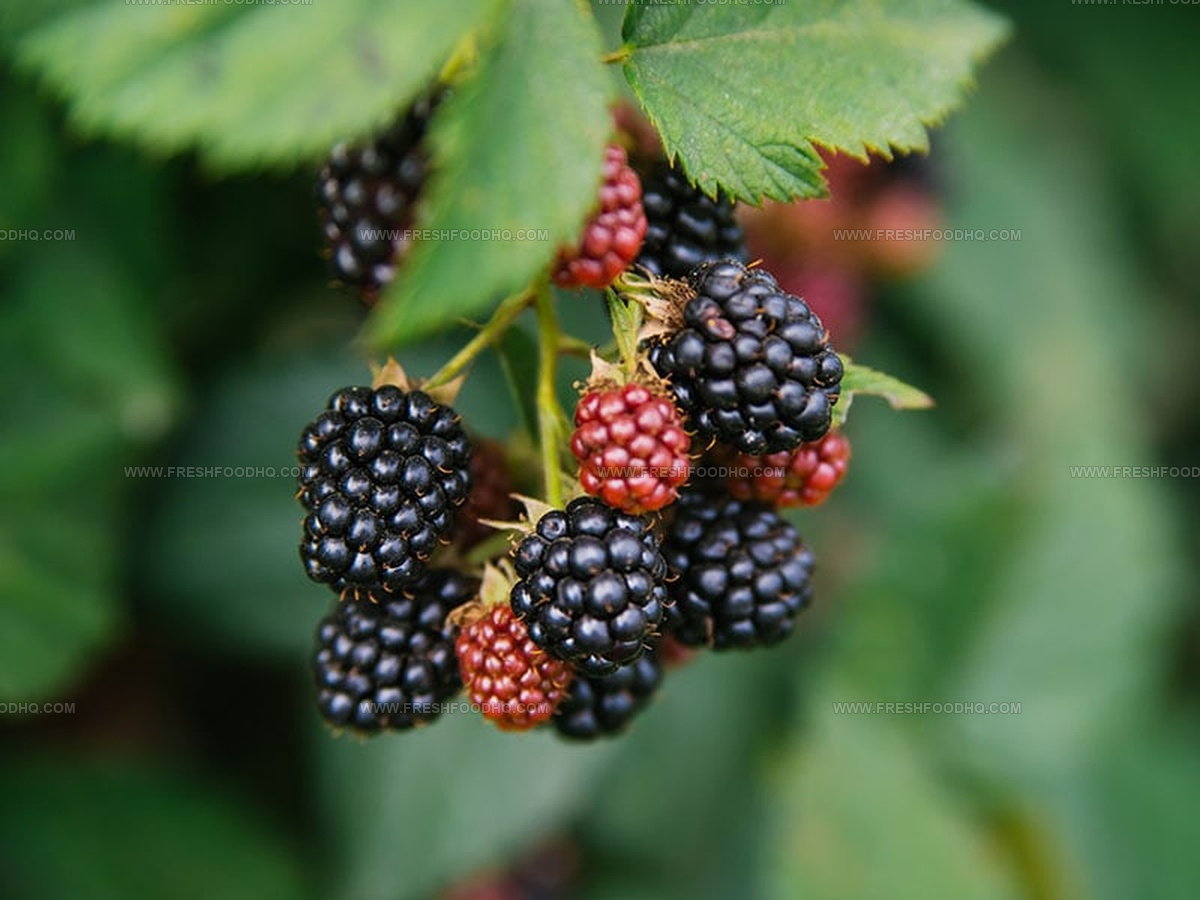
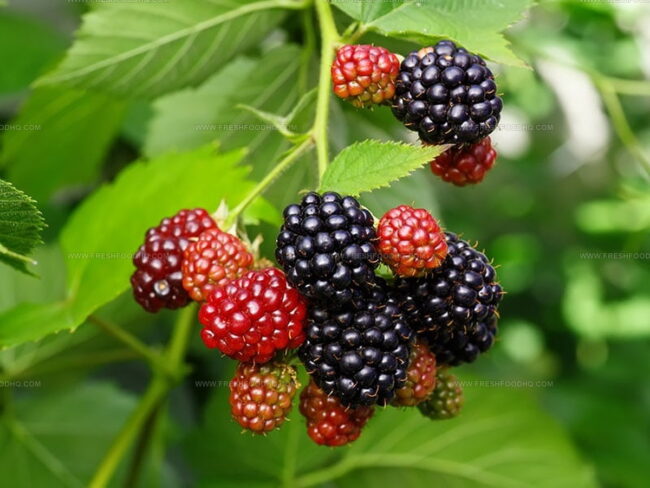
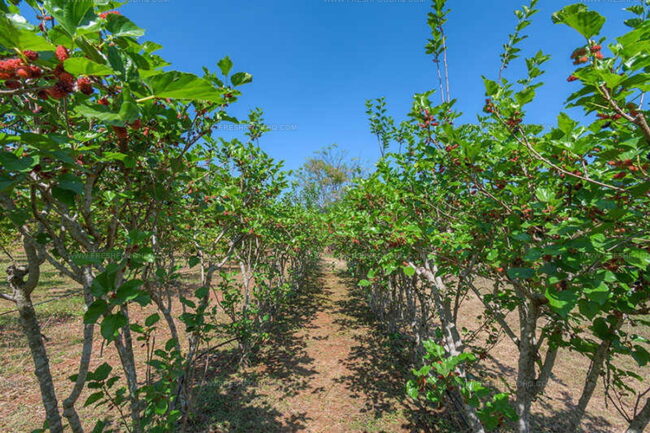

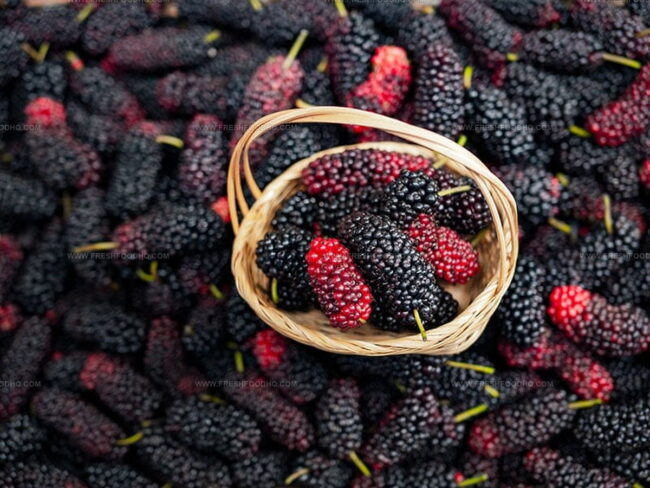
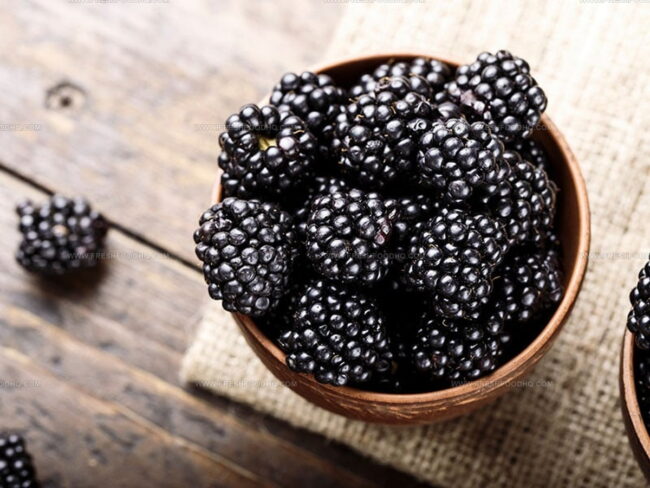
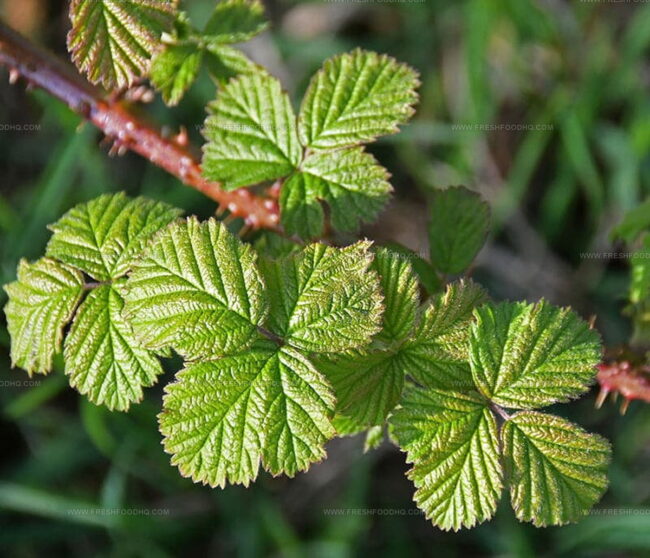
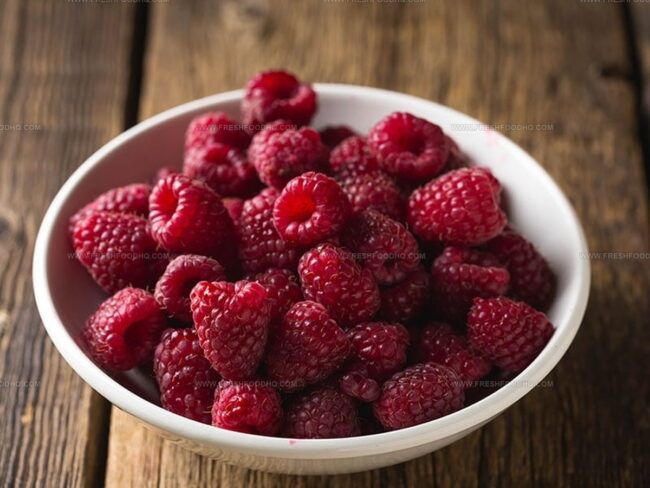
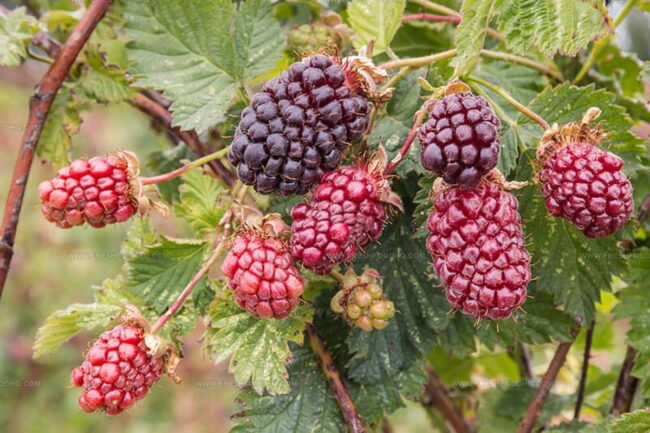
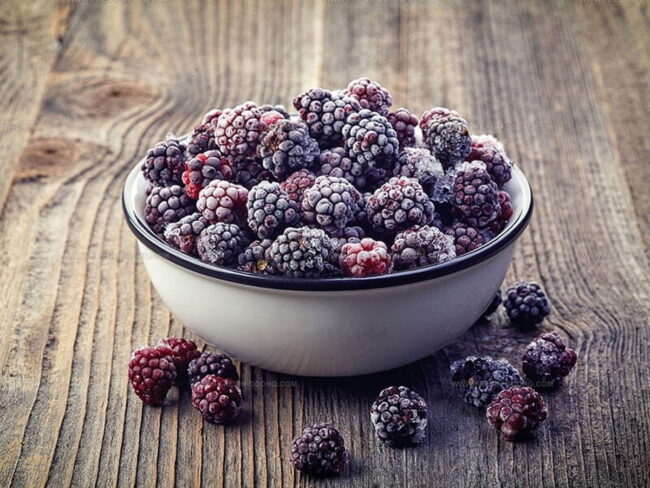

Samantha Lee
Recipe Developer & Content Creator
Expertise
Plant-based and vegetarian recipes, Recipe testing and development, Food blogging and digital content creation, Culinary education and workshops
Education
Oregon Culinary Institute (Portland, OR)
Samantha sees cooking like painting, every fresh herb, every juicy tomato, a new splash of color on a canvas.
After graduating from Oregon Culinary Institute, she blended her love of global cuisines and plant-based cooking into recipes that feel fresh, fearless, and full of heart.
Samantha’s kitchen is a place where comfort food gets a modern remix and every meal feels like a little adventure. When she’s not cooking, she’s out exploring farmers’ markets, sketching new recipe ideas, or getting her hands dirty in a community garden.